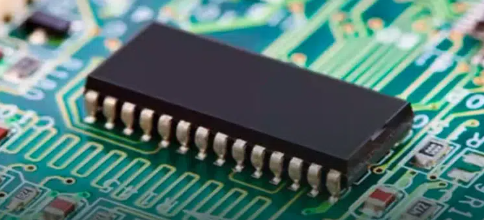Packaging Chips For Cars
As the complexity of automotive chips grows, so does the complexity of the package. In fact, packaging is becoming increasingly crucial to the performance and reliability of the chips, and both parts need to meet stringent safety standards before they are used inside a vehicle.
This is true for all safety-critical applications, but for automotive in particular there are several key reasons why packaging has taken on a whole new level of interest:
• Performance and low power. Advanced packaging options can reduce the bottlenecks for the flow of data, speeding up response time for critical systems, particularly accident avoidance in autonomous and driver-assisted vehicles.
• Reuse and time to market. Standardized packaging, such as chiplets, can significantly reduce the amount of time it takes to bring automotive chips and features to market. Automotive OEMs have been struggling to reduce time to market for designs from as long as seven years to one or two years.
• Protection. Harsh environmental conditions and an almost constant assault of vibration, electromagnetic interference and thermal extremes make packaging critical to protect the chips.
This is all good news for the outsourced semiconductor assembly and testing (OSAT) packaging houses, which are churning out a number of packaging options for this market. Among those are multiple flavors of wafer-level fan-outs, embedded wafer-level ball-grid array, package-on-package, and system-in-package.

To put this in perspective, automotive accounted for 9% of primary end markets last year for semiconductors, IC Insights estimates. This is a significant market in its own right, and it is growing quickly. The majority of chips produced still end up in communications or computers, but automotive several years ago was a small fraction of the overall chip market. It is growing quickly, and so is the value of the chips that are sold into this market.
In the past, the automotive chip market was all about actuators and low-end microcontrollers. There are advanced designed being developed for vehicles today at 10/7nm, with plans to push that to even lower-node manufacturing processes.
“It’s a huge market so far,” says Edward Fontanilla, group deputy director for technology strategy at JCET, the parent company of STATS ChipPAC. He says the total available market for OEMs in automotive was $136 billion in 2017 and will enjoy a compound annual growth rate of 13.4%, reaching $170 billion in 2022.
Chips going into advanced driver-assistance systems (ADAS) and other vehicle applications alone represent a $28 billion market, according to Fontanilla. In total, 20% of automotive chips will be going into infotainment systems, while powertrain components will account for 13%, he says.
Gartner forecasts the worldwide semiconductor market will grow to $451 billion this year, up 7.5% from last year’s $419 billion. Automotive will help drive demand for application-specific standard products this year, the market research firm predicts, along with graphics cards for gaming PCs, high-performance computing, and wired communications.
The top suppliers of automotive chips are NXP Semiconductors, Infineon Technologies, and Renesas Electronics, he noted. They are followed by STMicroelectronics and Texas Instruments, according to Semicast Research. Rounding out the top 10 are Robert Bosch, ON Semiconductor, Microchip Technology, Toshiba, and ROHM Semiconductor, in that order.
Among the OSATs providing packaging for auto chips, Amkor Technology is the market leader, with 56% share. Advanced Semiconductor Engineering (ASE) holds about 25%, while STATS ChipPAC represents less than 5%, Fontanilla says.
“Although we are not yet the same as far as Amkor and ASE in terms of automotive, we are looking to the future where we can also leverage on the big customers we have,” he adds. “We’re focusing mainly on infotainment, the advanced driver-assistance systems, the body systems, electric vehicles, as well as the aftermarket segment.” JCET is also focusing on LiDAR sensors and radar. “These are the key segments we are focusing on in 2018,” he says, adding that it will take five years for ADAS and automated driving to be fully realized.
The special requirements for automotive semiconductor packaging depend on the customer involved. “We are more interested on the reliability side, because we all know that zero defects are the safety concern of our user,” Fontanilla says. “Another special requirement for automotive chip packaging, of course, is the process flow of the packaging. They are different from the standard chips. Automotive is tighter in terms of process control and quality control.”
Zero defects is the new bar for automotive OEMs, and that is true for the chips inside a package as well as for the package. To ensure there are no defects, automotive chip packaging has a special inspection methodology. So as with the manufacturing of automotive chips, the packaging equipment is dedicated and designated and generally kept separate from other packaging lines. Every six months, the operators and engineers involved in automotive chip packaging go through training refreshment.
In addition to the ISO 26262 standard for functional safety, the ISO 16949 standard for quality management systems in the automotive industry supply chain must be met. STATS ChipPAC expects to be certified on 26262 this year, first in Singapore, then in South Korea and China.
Some similarities in packaging automotive chips and other chips exist. The process flow is similar in laminate substrates and leaded packages, Fontanilla says. The bill of materials set for automotive chips is different, however, and customers are willing to pay for that. One leading customer, not identified, accounts for $7 million a month in automotive chip packaging, he notes.
The next-generation automotive electronics “will be a lot of sensors — not only a hundred sensors, but more and more sensors going on,” Fontanilla adds. “The avoidance of collisions, parking systems, brake systems, everything will be automated.”
Revving up designs
Jean-Marc Yannou, senior technical director at the ASE Europe unit of ASE Group, says the packaging of automotive chips is often similar to the packaging of chips destined for consumer applications. That’s a big change from several years ago.
“Technology needed to be mature for a good five years before it would be adopted in the past,” says Yannou. “The timeframe is shortening now. And we don’t need to change the materials.”
One issue in manufacturing was motor contamination, which eventually led to reliability problems, Yannou notes. Corrosion could result.
Packaging serves a vital role here, and it will become even more important as chips are relied upon to avoid accidents at high speed. But ask two people what kind of package is best for this market and you will likely end up with multiple answers. All of them can play a role — leadframes, laminates, packaging using wire bonding for the interconnections, and flip-chip packages.
Fan-out wafer-level packaging and system-in-package technology are also finding their way into advanced automotive electronics. Automotive manufacturers and Tier 1 suppliers are shying away from SiP, at least for now, due to the higher packaging cost. SiP can be complicated for those companies, although they are becoming attracted to the “increasingly compact” nature of SiP, Yannou says.
The kinds of components going into cars include microcontrollers, sensors, radar chips, Internet protocol chips, and sensor-based electronics. “Automotive chip packaging is one of the fastest growing markets for us,” Yannou says. It now represents about 10% of the semiconductor packaging market, with a growth rate of 10% to 15% a year.
This isn’t just more chips, though. It’s more chips that have to work correctly, and packaging is a key component of that, says Prasad Dhond, vice president and general manager of automotive at Amkor Technology.
“The ‘multiplier effect’ is a big challenge in automotive semiconductor reliability,” he notes. “This is where a 1 part per million failure at the component level will translate to a 1% defect rate in the vehicle. For the highest reliability, we need zero defects. Packaging has a big role to play in achieving zero defects in automotive applications.”
Some of that is being driven by standards, which are not ordinarily associated with packaging. “ISO 26262 is related to functional safety and bulk of the compliance falls on chip and system designers. We support customers who have ISO 26262-compliant solutions by supplying supporting documentation as needed. We also help customers meet other automotive reliability standards, such as AEC-Q100 and AEC-Q006. We are developing automotive material sets and process flows to help our customers drive toward zero defects.”
Amkor offers 40 different package families to its automotive customers, at 11 automotive production facilities, all but one of which are in the Asia-Pacific region. The company has been active in packaging auto chips for more than four decades. Between Amkor and J-Devices, the auto chip packaging business represents more than $1 billion in annual revenue.
Dhond points to three main requirements to be a successful automotive OSAT:
• Quality systems based on automotive standards. This includes automotive certifications such as IATF16949 and compliance with AIAG (Automotive Industry Action Group) standards such as FMEA, SPC, APQP.
• Tighter manufacturing controls, enhanced material sets, and additional process steps.
• Capability to make significant capital outlays, manage a high-quality supply chain, and support production for a long period of time (10 to 15 years).
Some in-cabin and aftermarket automotive applications (AEC-Q100 Grade 3) have the same reliability requirements as commercial-grade applications.
“These components could use commercial-grade packaging materials and process flows, but still need enhanced automotive controls on the factory floor,” he says. “Overall, the automotive packaging market is about $10 billion, and growing faster than the overall packaging market. Electrification and ADAS are key trends driving this increase. Most automotive applications are using wire-bond packaging today, but they are moving to advanced packaging to support greater integration and lower parasitics. Traditionally, integrated device manufacturers have kept automotive packaging internal, but we see more of an outsourcing trend as demand increases. Also, fabless suppliers are becoming key players in the automotive market, giving tailwinds to the OSAT business.”
On the fast track
The automotive chip packaging market is on a fast track, with technology enabling advanced driver-assistance systems leading ultimately to automated driving. The OSAT contractors are deeply involved in the field, although some vendors of automotive chips are keeping their packaging work on the inside.
That could change as this market begins to spike, and as complexity and time-to-market demands begin ratcheting up with increasing levels of driver assistance and autonomy. And so will the demands on the packaging houses to protect electronics that will work for extended periods of time under the worst conditions imaginable.
在线留言询价
- 一周热料
- 紧缺物料秒杀
| 型号 | 品牌 | 询价 |
|---|---|---|
| TL431ACLPR | Texas Instruments | |
| BD71847AMWV-E2 | ROHM Semiconductor | |
| CDZVT2R20B | ROHM Semiconductor | |
| MC33074DR2G | onsemi | |
| RB751G-40T2R | ROHM Semiconductor |
| 型号 | 品牌 | 抢购 |
|---|---|---|
| IPZ40N04S5L4R8ATMA1 | Infineon Technologies | |
| TPS63050YFFR | Texas Instruments | |
| BU33JA2MNVX-CTL | ROHM Semiconductor | |
| ESR03EZPJ151 | ROHM Semiconductor | |
| STM32F429IGT6 | STMicroelectronics | |
| BP3621 | ROHM Semiconductor |
- 周排行榜
- 月排行榜
AMEYA360公众号二维码
识别二维码,即可关注


请输入下方图片中的验证码:


























